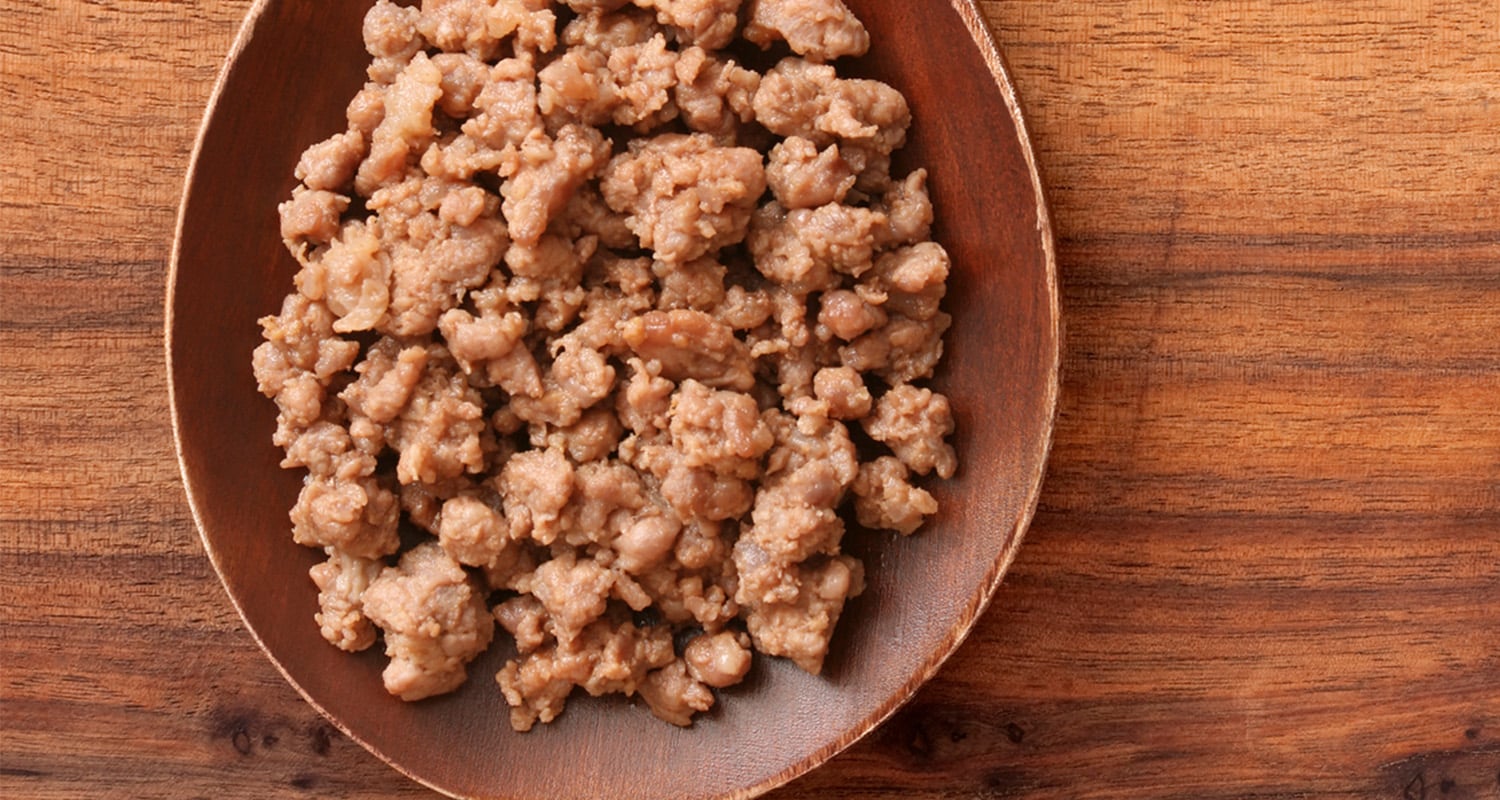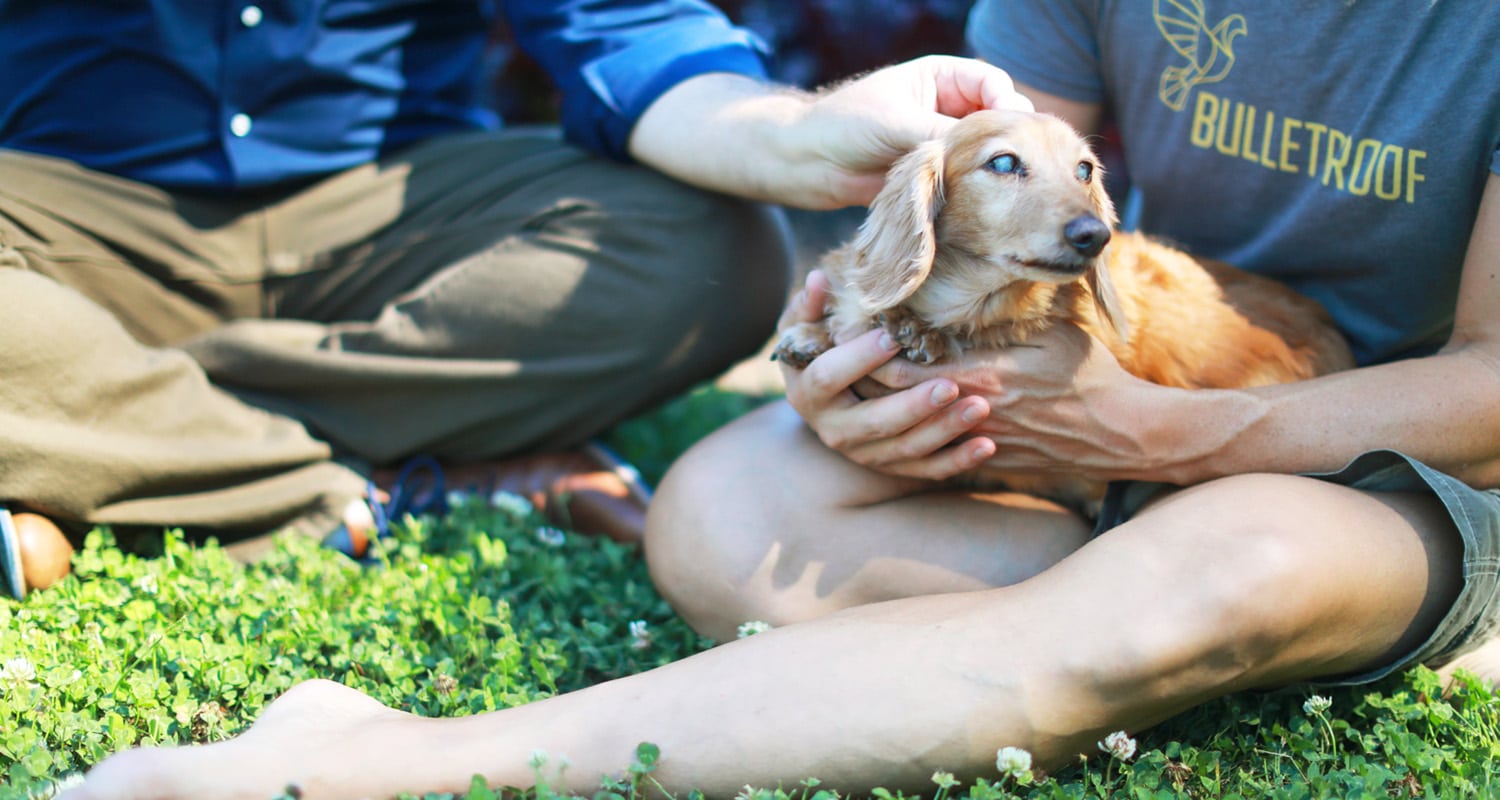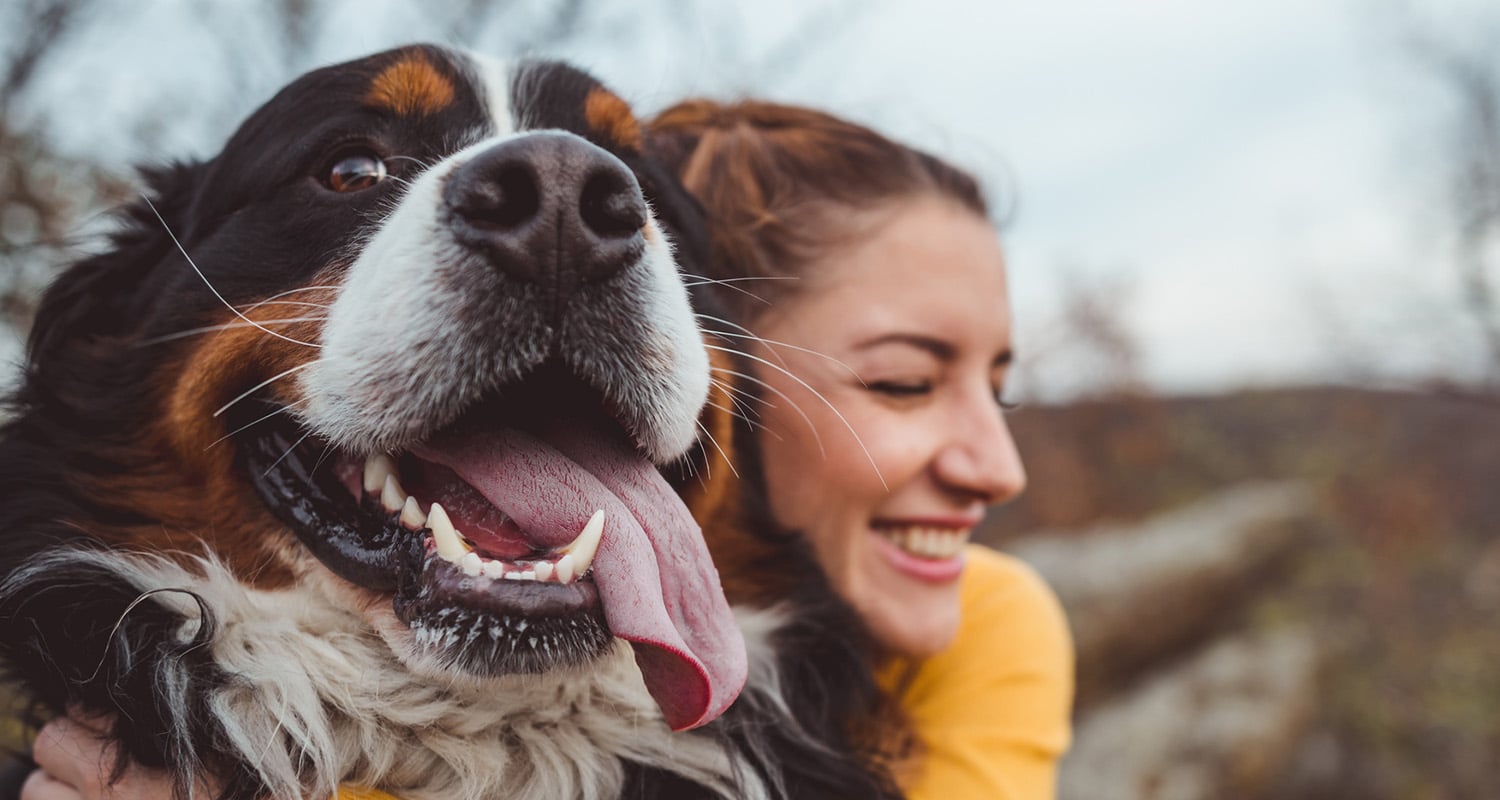
You know by now that a diet full of nutritious whole foods will make you look and feel your best. The same can be said for your pets, something that Bulletproof founder Dave Asprey discovered firsthand. Despite age, blindness, and congenital defects, his 13-year-old dachshund Merlin is a healthy and happy pup — all thanks to a raw diet that keeps him thriving.
Like humans, your dog’s diet may make or break his performance. Given the rise in diseases like cancer among dogs,[ref url=“https://www.ncbi.nlm.nih.gov/pubmed/21352376”] diet may play a role in managing underlying inflammation and nutrient imbalances. Yet many pets eat kibble loaded with corn, soy, and artificial flavors — the same foods that can mess with human biology.
From a health standpoint, a raw diet for dogs makes sense. Wolves, the closest ancestors to dogs, follow a raw carnivorous diet with long fasting periods when prey are not readily available.[ref url=“https://www.cambridge.org/core/journals/british-journal-of-nutrition/article/dietary-nutrient-profiles-of-wild-wolves-insights-for-optimal-dog-nutrition/6698A301900EEDF10E49B062A2BD9ED8”] Research also links a raw diet for dogs with lower triglyceride levels, despite their higher fat content.[ref url=“https://academic.oup.com/jas/article-abstract/96/9/3670/5035020?redirectedFrom=fulltext”]
Health benefits of a raw diet for dogs
Little research supports a raw diet for dogs. However, pet owners that transition to raw feeding say the benefits are clear:
- More nutrient absorption
- Smaller stools
- More energy
- Cleaner teeth
- Improved skin health with less shedding
- More satiety, so dogs eat less often
Want to experiment with a raw diet for your dog? Check this list for the best foods to serve (and avoid), plus Dave’s feeding regimen for Merlin.
Raw diet for dogs: Recommended foods and supplements
1. Pastured and wild-caught protein (especially beef)
Dogs need grass-fed beef for the same reasons humans do: It’s loaded with nutrients and healthy fats to keep them fueled. Ground beef makes a delicious protein option on a raw diet for dogs, but occasional raw wild-caught fish, like salmon and sardines, can also deliver a dose of wholesome protein.
Consider adding pastured collagen peptides to your dog’s diet, too. Just like in humans, it supports stronger joints and silky hair (or fur). Depending on your dog’s size, you can mix up to one scoop directly into their food.
Avoid feeding your dog raw chicken, since it puts your pet at risk for salmonella, a bacterial disease commonly linked to raw poultry and undercooked eggs. Lightly cooked poultry can serve as an occasional protein source, but won’t deliver the same punch of healthy fats as beef.
2. Healthy fats
For a more Bulletproof pet, add wholesome fats to your dog’s raw diet to improve satiety. Add raw egg yolk directly on top of your pup’s meal twice per week for a dose of potassium, antioxidants, and calcium that can also support a shiny coat.
Dogs (especially overweight ones) can also benefit from MCT oil in their food — up to 15% of their calories. A growing body of research suggests that this highly-refined coconut oil forms fat-burning molecules called ketones for dogs, making it a better choice than coconut oil alone. Adding as little as a teaspoon of Brain Octane Oil — an ultra-purified form of MCTs from 100% coconut oil — to your dog’s bowl can turn off his “hangry” behavior and keep him energized well into his golden years.
3. Key vitamins
Dogs suffer from constipation, mitochondrial deficiencies, and nutrient imbalances, too. Adding targeted supplements to a raw diet for dogs can fill in those dietary gaps.
Try dried (dessicated) beef liver or finely chopped fresh liver for extra minerals, chlorella for toxin binding, coconut charcoal for constipation relief, or magnesium for more energized mitochondria. Dog size and dosage needs will vary, so talk with your vet before adding supplements to his raw diet.
What to avoid on a raw diet for dogs
1. Vegetables (maybe)
Wild canines and their ancestors got their fiber by eating the fur, bones, and ligaments of their prey, along with whatever plant matter remained in their digestive systems. Thus, while some raw food believers opt to include veggies in their dog’s diet, it may not be necessary — and it may make the dog hungry more often. Some pets need more fiber than others on a raw food diet: If your pup suffers from diarrhea or constipation, he may need to up his fiber intake. If you do feed your dog vegetables, add a small amount of shredded raw carrots or celery to each meal.
2. Grains
Cut out all grains, including corn, wheat, rice, and oats. Dogs are not wired to eat grains, and a grain-heavy diet can lead to allergies or obesity. Your pet should only get protein from meat on a raw diet for dogs.
3. Cooked “people” food (even scraps)
Once your dog transitions to a raw diet, avoid all cooked table food — especially scraps. Scraps high in added fats can cause diarrhea in dogs, while cooked bones can splinter and damage teeth or internal organs. Scraps can also contain toxic or fatal ingredients for dogs: Food with garlic or onions, for instance, can cause anemia.
4. Xylitol
Xylitol makes a delicious low-carb sweetener on a ketogenic diet, but use with caution if you have a furry friend in your household. Since xylitol tastes just like sugar, dogs will secrete insulin and get fatal hypoglycemia if they consume it. Keep it out of reach and never add it to a raw diet for dogs.
5. Shelf-stable food and treats
Not only is shelf stable food not raw, it can be harmful for your dog’s gut bacteria.
Merlin’s raw diet routine
Disclaimer: Merlin is a small dog. Portions and foods will vary depending on your dog’s size and unique dietary needs.
Daily diet:
- 2 ounces raw ground grass-fed beef or lamb
- 1/2 scoop pastured collagen protein
- 1 teaspoon Brain Octane Oil
- 2 ounces steamed carrots, celery, or brassica vegetables
- 1 teaspoon raw carrot or celery
Added food and supplements:
- 1 capsule Eye Armor, broken open and added to meat (every other day)
- 1 capsule grass-fed desiccated lamb heart and liver blend, such as Pure Power (broken and poured over food, every other day)
- Raw egg yolk (about 2 times per week)
- 1/2 teaspoon Carbon60 Plus (every other day; learn more here)
- 1 teaspoon olive oil (about 2 times per week)
- 1/8 teaspoon magnesium complex (glycinate, ascorbate, malate, aspartate), such as AOR (roughly every other day)
- 1 Omega Krill Complex capsule (about 2 times per week)
- A small amount of activated charcoal, if experiencing digestive issues
- 1 capsule brain health vitamin blend, such as Neurovite Plus (every other day)
Should your dog try a raw food diet?
Despite the health benefits of a raw food diet for dogs, it may not be for everyone. Raw food costs can add up quickly for large breeds, and keeping meat and organs fresh requires more effort than storing a bag of kibble in your pantry.
You don’t have to adopt a full raw diet to keep your dog healthier. Small changes, like adding Brain Octane Oil to meals or adopting a partial raw diet, will help your pup more than feeding him dry food alone.
Whatever diet you choose for your dog, keep his food wholesome and nutritionally balanced — and watch him thrive for years to come.





















